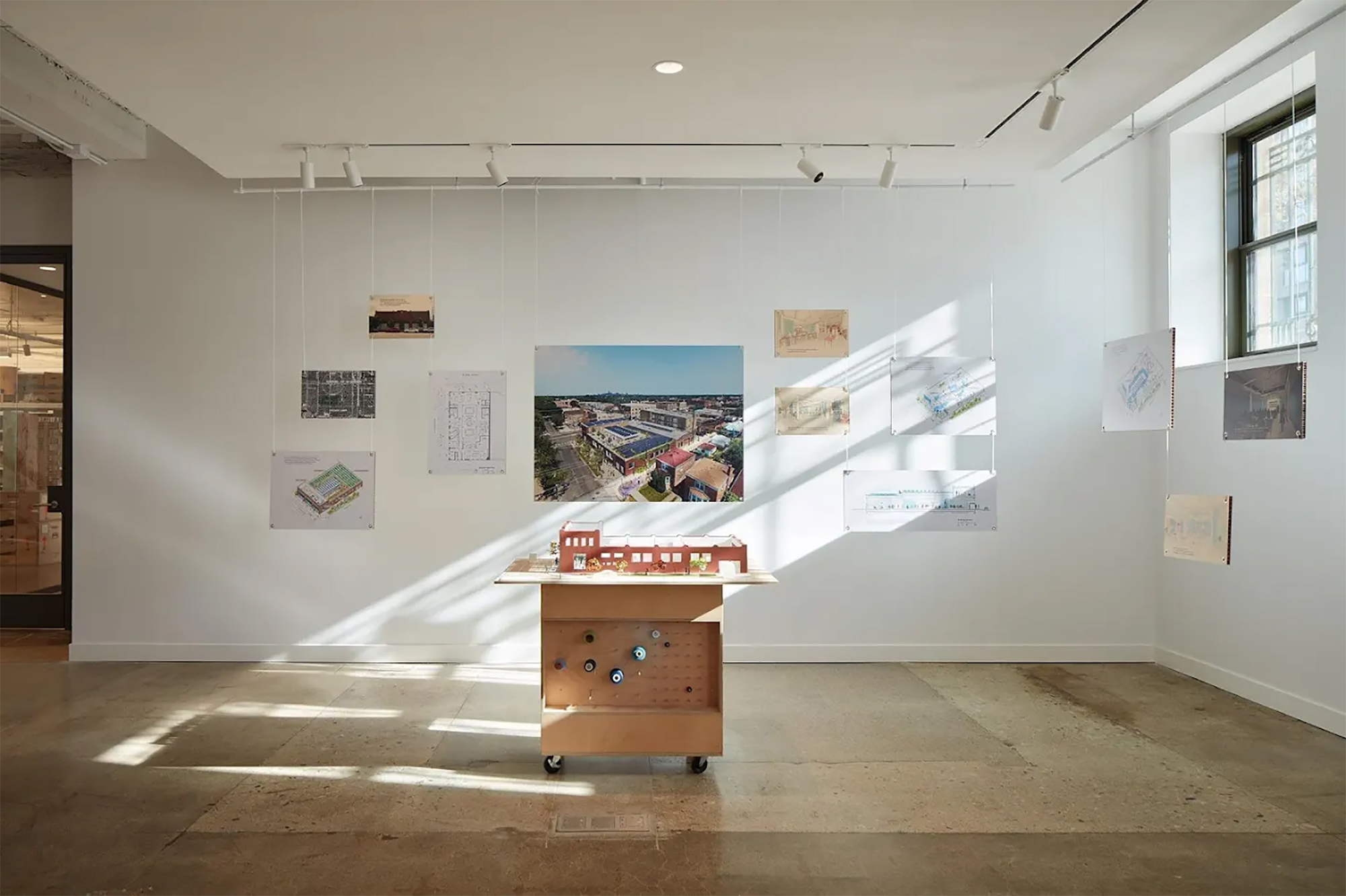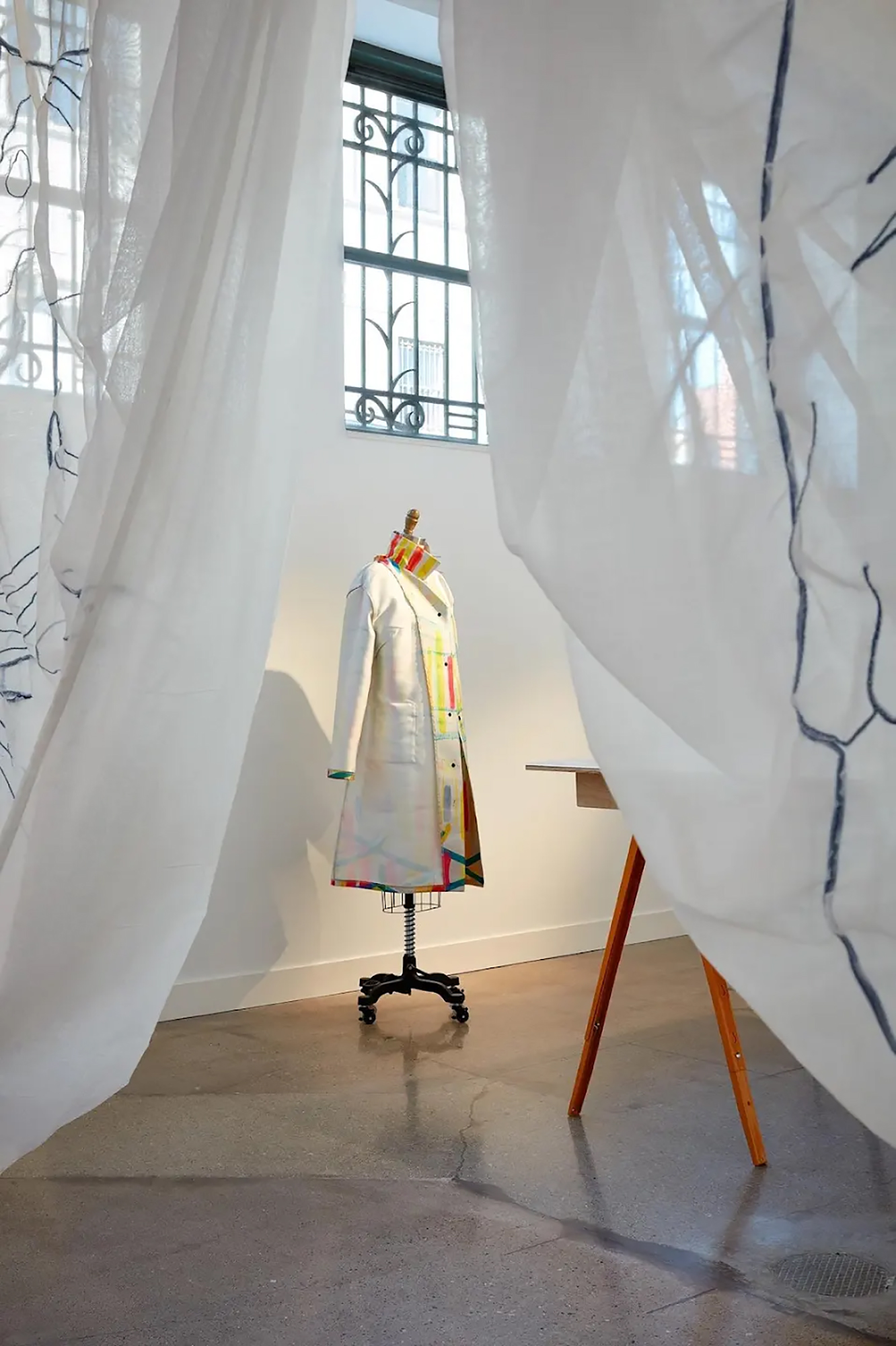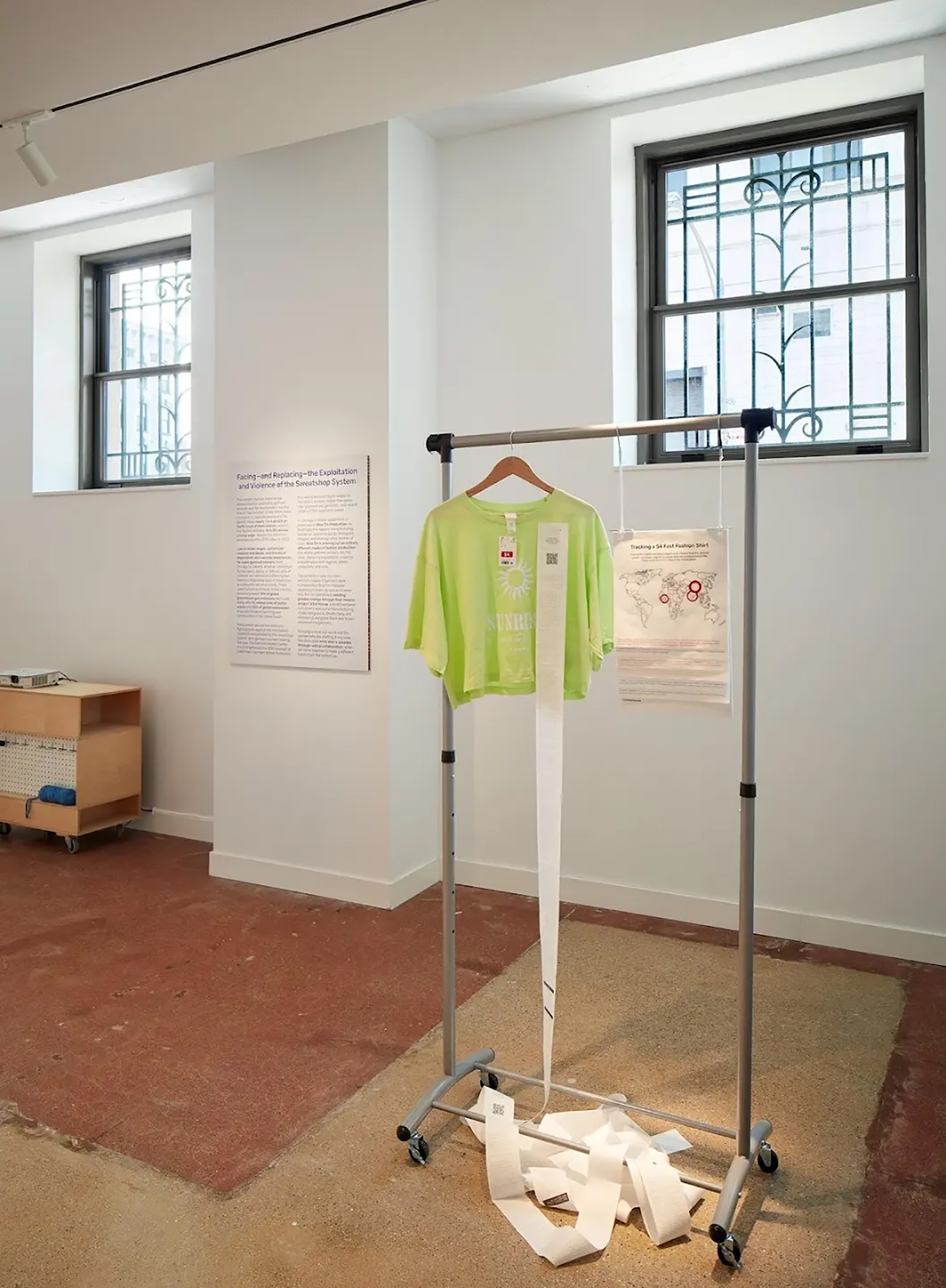
a collaboration with blue tin production and studio gang creates two inaugural happenings: an exhibition — a different future in the making: building garment worker power & a broader abolitionist movement; and blue tin production’s corporate office — 63rd house. a third element includes the opening of studio gang’s new gallery space in wicker park where this exhibition debuts. that’s quite an announcement!
the opening of the gallery coincided with the opening of the 2021 chicago architecture biennial (cab), where studio gang was a partner. because of the pandemic which affected long-established global venues, such as the venice architecture biennale, whose dates were put off twice — first, from may to august 2020, then to may 2021, chicago’s events will offer content within a neighborhood-centric format throughout the city.
the 2021 chicago event, titled the available city includes 15 site-specific architectural installations: located on public and private lots located in chicago’s neighborhoods of north lawndale, bronzeville, woodlawn, englewood, pilsen, and the south loop. there are also two exhibition-based explorations located in an unused storefront space in bronzeville and at the graham foundation.
[ the exhibition ]
a different future in the making shows how these questions are being explored by blue tin production, the first apparel manufacturing worker co-operative in the u.s. run by immigrant, refugee, and working-class women of color. materializing blue tin’s radical model and vision using the tools and techniques of garment work, this exhibition also reveals how the co-operative is seeding greater change through their newest project: 63rd house, a community space and manufacturing studio in chicago lawn designed by studio gang.
what can bottom-up, systemic change look like in the garment industry—and beyond—when exploitation and violence are replaced by community and care? and what role might architecture and design play in this transformation?
on view
20 november 2021 > 11 february 2022
1520 west division street chicago
[ tickets/reservations ]

above> a concept presentation of the 63rd house headquarters / below> a trench coat made by blue tin, glimpsed through a hand-sewn curtain by diana aguilar and hale ekinci, 2021




[ studio gang ] photos steve hall (c) hall + merrick

under the direction of lead curator dr erwin viray, head of pillar, architecture and sustainable design at singapore university of technology and design, no more free space? exhibition responds to singapore’s unique environment: densely populated, multi-cultural, multi-ethnic island city-state. the exhibition comprises twelve singapore-based architecture projects, spanning residential, commercial, private and public buildings, each demonstrating how to turn constraints into opportunities for ‘free space’ by re-imagining what a highly compact city can be. each project incorporates light, air, greenery or water to create oasis and delightful free spaces in dense urban environments, bringing joy and connectivity to the community. the centerpiece of the exhibition will be an interactive installation – an ethereal cloud of handcrafted acrylic knots with multi-sensory sounds, light and image projections, re-creating the experiences of singapore for the audience. singapore pavilion is commissioned by the designsingapore council of the ministry of communications and information and the urban redevelopment authority.
‘no more free space?’ asks the pavilion of singapore at the 16th international architecture exhibition la biennale di venezia

curated by xristina argyros and ryan neiheiser (neiheiserargyros.com), and entitled the school of athens the project examines the architecture of universities and academia around the world, focusing on the common spaces outside of the classroom, and addressing their importance as informal spaces of debate, exchange and ultimately, learning. the curatorial duo reimagines the greek pavilion as its own kind of learning ‘freespace’, adopting the architectural trope of the stepped landscape. dotted around the stepped elements, almost 60 3-d printed architectural models of common spaces within academic buildings, both realized and non, will be on display. the models include spaces across the five continents, and across history, in recognition of the common space – un-programmed spaces for impromptu conversation, casual gossip, heated debate, pop-up lectures networking and informal teaching – as vital to academia’s continued relevance and vibrancy. spaces that demand and deserve intelligent critique and update. the project is delivered in collaboration with architectural courses at architectural association in london and the university of athens.

above> ballynahinch market house in county down, northern ireland. courtesy © neil clifton
the exhibition curated by six young architects and designers, examines the role of markets in rural irish communities, their gradual demise and their importance for economic and social engagement. during the biennale the pavilion will be transformed into a rural irish market square, complete with market stalls, goods, soundscape and a daily newspaper with a range of contributors. after the biennale the exhibition will return to ireland touring small towns around the country gathering new stories and participants.











